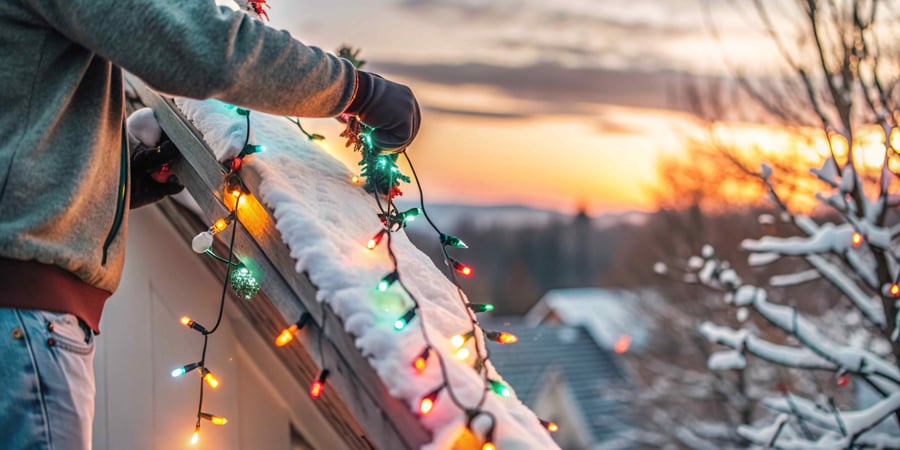While Christmas decorations bring joy to many, they also have significant environmental consequences. Each year, approximately 6.63 billion kilowatt-hours of electricity are used to power holiday displays in the U.S., enough to power 663,000 homes for an entire year!
NASA has found that nighttime brightness increases by 20 to 50% during the holiday season. This heightened brightness disrupts the natural rhythms of plants and animals, affecting sleep cycles, migration patterns, breeding cycles, and predator evasion. For example, newly hatched baby sea turtles use the moon to find the ocean, but artificial lights can lead them astray, making them vulnerable to predators and traffic. Migratory birds can become confused by sky glow, causing them to migrate prematurely and arrive at nesting sites before conditions are suitable. Additionally, many insects are fatally attracted to artificial lights, impacting the food supply for species like bats, frogs, and birds.

To mitigate these impacts, here are some steps to make your holiday lighting more eco-friendly:
- Choose LED or Solar-powered Lights: Opt for LED lights instead of incandescent ones. LEDs are more energy-efficient and last longer. Solar-powered lights are another great option, as they don't consume grid electricity.
- Use Automatic Timers: Set automatic timers on your Christmas lights to turn off when you go to bed. This reduces energy use and light pollution.
- Opt for Colored Lights: Colored lights reduce light intensity and are less attractive to wildlife, minimizing the impact on outdoor animals.
- Install Shielded Fixtures: Use shielded fixtures and direct lights downward to minimize light spillage into the night sky and reduce the impact on nocturnal wildlife.
If you need new Christmas decorations because your old ones are no longer functioning or you want to switch to more efficient fixtures, Colorado has several environmentally friendly options for disposal:
Christmas Tree Disposal: Recycled trees are an option in most counties throughout Colorado. Check your county's disposal options and find drop-off sites near you.
Christmas Lights Recycling: Lights are harder to recycle because the plastic and metal pieces need to be separated. Some places like Eco-Cycle in Boulder handle drop-off locations for Christmas lights. In Denver, there are drop-off locations for residents but they do not accept liquid-filled or neon lights. In Loveland, the city partners with ACE Hardware and the Lights for Life program, where hardware stores sell copper wires used in lights, with proceeds going to cancer nonprofits.
Reuse Wrapping Paper and Gift Bags: Try to reuse wrapping paper and gift bags. Some metalized wrapping paper with foil components needs special handling and can’t be recycled as easily as typical wrapping papers.
By incorporating these practices, you can enjoy a festive holiday season while minimizing your environmental footprint and reducing light pollution.
Hunter Wilson was a Sustainability Intern at Walking Mountains during the Summer of 2024.







